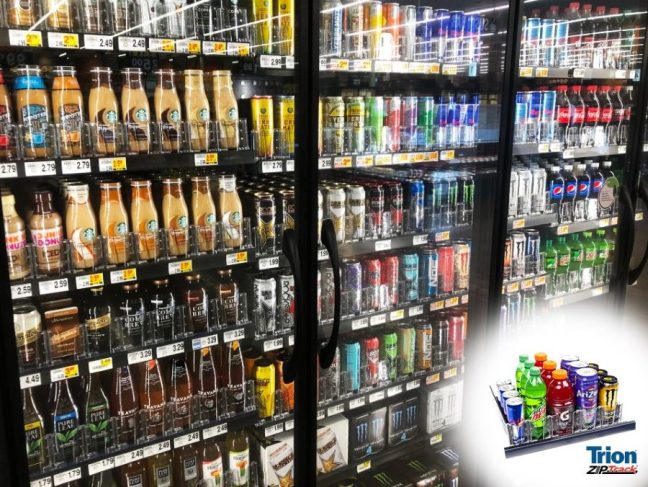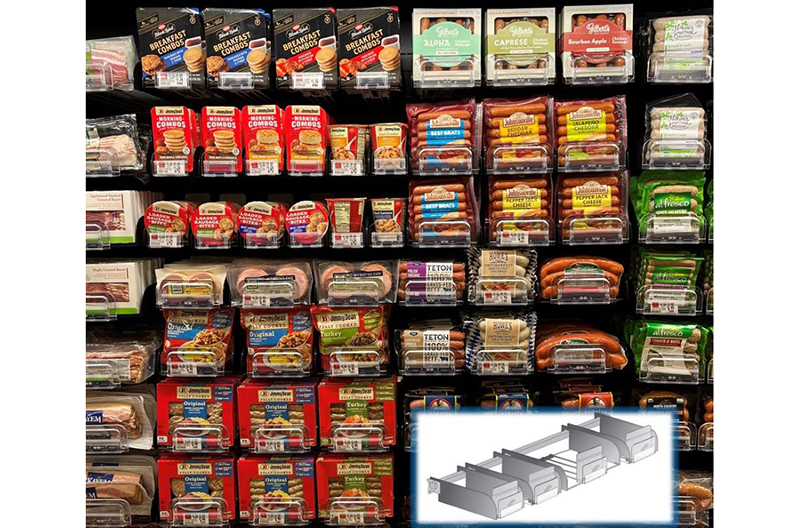Sponsored content

Retailers are under pressure to maximize every facet of their business – including and especially at the shelf. With mere seconds to capture a shopper’s attention having the right products in the right place has never been more critical.
Shrinking store sizes and increased assortments can make merchandising the shelf set a time consuming and laborious task.
The Shelby Report recently sat down with Craig Weiskerger, director of sales and marketing, and Rich Wildrick, director of engineering, for Wilkes-Barre, Pennsylvania-based Trion Industries to learn more about the state of shelf merchandising today, understand what retailers should look for in a supplier partner and hear where the category is heading.
What are some of the top challenges grocers are facing today?
Rich: Every retailer is dealing with labor issues, and many are faced with having to raise wages just to stay viable. Shrink is another top concern. Whether it’s combatting theft or looking for solutions to minimize perishable waste, loss prevention is on everyone’s mind. Both can significantly impact the retailer’s bottom line.
Craig: Retailers and grocery customers alike are struggling with how to merchandise a set in a way that best highlights products. At the same time, it can be challenging to keep products safe and well displayed in a way that encourages, rather than deters, shoppers from buying these items.
When you look at merchandising the shelf set, what are some of the most significant changes that have taken place in recent years?
Rich: Grocery stores are getting smaller, retailers are being asked to carry more SKUs and packaging formats have dramatically changed and are more varied. All these things have necessitated retailers to find creative ways to sell more in the same amount of space.
For instance, when baby food went from jars to pouches retailers needed to find new ways to display these packages that incorporated both flow through pick up and product rotation.

Craig: With the implementation of different fixtures retailers have discovered by tightening up their planograms, the set looks better and they can maximize shelf space to include more product. Additionally, when a package is pushed forward to the front shelf edge it creates a better, more consistent look and the presentation is more appealing to consumers, all of which positively impacts sales.
Today’s packaging is being designed to act like brand billboards and shelf fixtures help accentuate that.
Do certain categories benefit more from merchandising fixtures than others?
Craig: Almost every category in the supermarket can benefit from being optimally displayed. A few that standout include bagged salads, cooler cases, packaged meats, frozen meals, as well as center store products such as bagged coffee, paper plates, candy and salty snacks.
Every category manager today is being tasked to find a better way to leverage their space.
What are some of the quality’s retailers should look for when aligning themselves with a merchandising solutions provider?
Rich: At first glance shelf merchandising products might appear the same but this isn’t necessarily true. Not every company has the heritage in the industry needed to be a valuable resource to a retailer.
Look for a supplier partner who has a long history of successfully implementing merchandising systems in grocery. Ask them if they are willing to extend a test installation so that you can really get a hands-on feeling of that solution to see if it meets all the criteria you are looking for. Testing is one of the best ways to achieve proof of concept and demonstrate the effectiveness of the product.
Next, look at how the product is made and what it is made from. Are they using steel and wire from quality sources or cheap substitutes? Durability is critical because these products need to hold up well to rigorous use. Where the product is made is also important. Products made in the U.S. have shorter lead times and buying items made here supports our economy.
Craig: I’d just echo that doing your due diligence is key. There are imported products that look and operate similarly to those made in the U.S. but may not last due to inferior components or manufacturing procedures.
Companies such as ours have been around for more than 50 years and have decades of experience creating and improving our product lines. We control the quality of our products from cradle to grave. We do all our own tooling, manufacturing and assembly which allows us to stand behind our products 100 percent
We also have custom capabilities for those needing to fill large orders.

Can you tell me more about your custom work?
Rich: A lot of this business is listening to a customer’s needs and then trying to find a solution for it. Having an on-site engineering department has enabled us to work closely with our customers to understand what they are trying to achieve and then taking the initiative to both come up with and then create the solution. Over the years our business has grown because we’ve been able to tap into this need. Many times, what started as a custom item has turned into something other retailers find useful.
For retailers with budget concerns, where do you suggest they start and what features should they look for?
Rich: Focus on the parts of the store that are pain points and habitual problem areas. This may be labor-intensive categories or those with the biggest shrink.
Anything retailers can do to increase product visibility and better organize the shelf will see a quick return on their investment. By using shelf management systems, retailers are going to cut labor costs because they will reduce the time needed to stock the shelves. It is also going to give them the ability to have proper product rotation.
Craig: Retailers should also focus on merchandising options that offer the most flexibility. Given the variety of packaging types and sizes found throughout the store selecting fixtures that can adjust in width and have a pusher feature to accommodate this is key.

Where do you see the category heading?
Rich: In-store merchandising is going through a renaissance right now. Changes with packaging are always going to cause adjustment with shelf sets, but now retailers need to take other considerations into account such as AI and the introduction of robotic scanning. Stores that have implemented shelf management systems will have an easier time using advanced inventory tracking tools because locating out of stocks will be simpler.
The increasing demand for online ordering is also reshaping the category. In some stores, for example, we are seeing a move to relocate the order picking process to the backroom. Too many pickers and carts in the aisles were inconveniencing shoppers so some retailers are bringing this task to the back of the house. As they do they need merchandising solutions to organize this space better.
Shelby: Rich and Craig, thank you so much for speaking with us about the state of shelf merchandising and what the future holds. It certainly sounds like retailers have their work cut out for them in terms of finding ways to optimally merchandise the shelf this year. It’s good to know there are experts in the field with deep roots in the industry that can offer retailers experienced-based recommendations and guidance.

About Rich Wildrick
As the director of engineering, Rich Wildrick’s education at Penn State in Mechanical Engineering as well as his more than 30 years in machine and product design are invaluable. His experience ranges from design to sales, heavily focused on the fixtures for retail and POP industries.

About Craig Weiskerger
Years of experience as an accomplished sales and marketing professional contributes to Craig Weiskerger’s position as Trion’s director of sales and marketing. Since graduating from Bloomsburg University, his leadership has been enriched by highly successful roles spanning the salt, oil and gas and manufacturing industries.
Read more from Ask the Experts series by The Shelby Report.

